A number of announcements have been made about vehicle-to-grid (V2G) lately – exciting developments that represent the first steps in the deployment of a technology that could have a considerable impact and help accelerate the transition to electric vehicles, and more broadly a low carbon economy.

To give some context, the battery in a typical Tesla can power an average family home for about a week. You have to let that sink in for a while. The energy it takes to shift a car and its occupants 300 miles is roughly equivalent to what it takes for a whole family to have the lights on at home, watch television while eating microwave popcorn, run the dishwasher, kettle, iron, cooker, and the list goes on - for an entire week.
A recent article by OVO Energy outlines average household energy use around the world. It states that in the UK in 2014, annual usage per annum dropped below 4,000kWh (76kWh per week) and don’t be surprised if that average continues to drop thanks to gains in energy efficiency - energy consumption in the country is projected to be 5% below 2013 levels by 2020; not bad in a (moderately) growing economy, even if there is considerable room for improvement. So, even a modest 75kWh Tesla battery (Tesla’s largest battery on offer is now 100kWh) can easily cover the average household’s electricity needs. Add charging from renewable sources to keep the car topped up whenever it is stationary, and both daily travel needs and stationary energy consumption are covered, all in one neat package. OK, so a Model S is an expensive way to power your home, but for anyone who plans to buy one anyway, and who has solar panels on their roof, the case for using excess stored energy from the car to power the house becomes all the more compelling.
Denne historien er fra March-April 2018-utgaven av AutoVolt Magazine.
Start din 7-dagers gratis prøveperiode på Magzter GOLD for å få tilgang til tusenvis av utvalgte premiumhistorier og 9000+ magasiner og aviser.
Allerede abonnent ? Logg på
Denne historien er fra March-April 2018-utgaven av AutoVolt Magazine.
Start din 7-dagers gratis prøveperiode på Magzter GOLD for å få tilgang til tusenvis av utvalgte premiumhistorier og 9000+ magasiner og aviser.
Allerede abonnent? Logg på
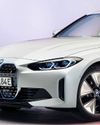
BMW Prices Up All-Electric i4 Saloon And iX SUV
DUE for UK launch in November 2021, BMW has released pricing details for the new all electric i4.

Volvo Trucks announces new family of heavy electric HGVs
VOLVO Trucks will boost its electric truck range in 2022, with the arrival of three more zero emission HGV models. Joining the FE and FL Electric trucks which are aimed at urban routes and use, the new FH, FM and FMX Electrics will cater for the heavier road transport sector.
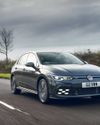
VOLKSWAGEN GOLF GTE
Can a hybrid hot hatch really deliver the best of both worlds? Alex Grant finds out.

REACH FOR THE SKIES
Electric flying racing cars have literally taken off, thanks to pioneering efforts from the Airspeeder team.
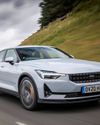
POLESTAR 2
With motorsport in its DNA, has Polestar cracked the electric driver’s car?
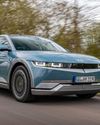
HYUNDAI IONIQ 5
The retro-inspired first instalment of Hyundai’s new-generation EV line-up has substance worthy of its head-turning styling.

Kia EV6
Hot on the heels of the Hyundai IONIQ 5, sister car the EV6 heralds a fresh new design direction for Kia, as well as the first of eleven electric cars (including seven dedicated) to launch globally by 2026.

BEAUTY... and the BEAST
With five rounds, nine teams and no fossil fuels; the first season of Extreme E is a no-holds barred proving ground for next-generation electric technology, and the result of some competing sustainability requirements.
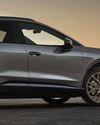
Audi prices Q4 e-tron
THE new Audi Q4 e-tron all electric SUV is now on sale on the UK, with prices starting at £40,750 OTR for the standard model and £42,250 OTR for the more swoopy, coupélike Sportback model.

2021 JAGUAR E-TYPE ELECTROGENIC
The Jaguar E-Type, dubbed “the most beautiful car ever made” by Enzo Ferrari needs little introduction to classic car fans the world over. Its design is so iconic that the E-Type is frequently credited as blurring the lines between definitions of art, sculpture and vehicular transportation.